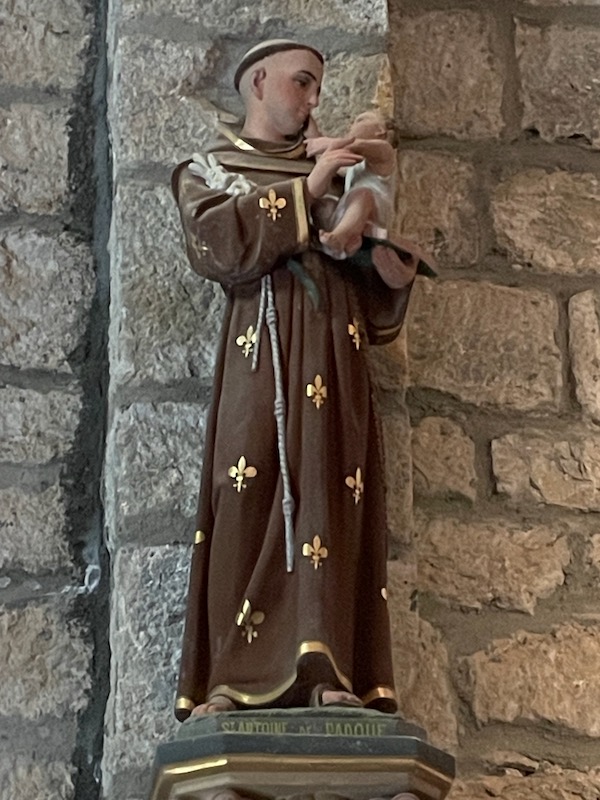Our Blog - Lombardy 2025 - Termes and the Chateau de Termes, France
The feudal lords have been known here since the 11th century. In the early 13th century, the region became a refuge for many Cathars under the leadership of Raymond de Termes. I'll start with just a brief little bit on who the "Cathars" were, in case you don't know (I didn't know until I moved to this area). Catharism is the contemporary name for a medieval European Christian religious movement that broke from the Roman Catholic Church between 1000 and 1210. The term "Cathar" was used in the 12th century by a monk to designate "heretics", or those who held an opinion at odds with was generally-accepted, or in this case, what the Roman Catholic Church said. You may hear also the expressions "Albigeois heresy", "Albigeism" and "Albigeois", which have also been used, especially when speaking about the Crusades against the Cathars.
In 1209, an army set off on the Albigensian crusade, or the crusade against these heretics, the Cathars. They were successful in sieges against several nearby towns, like Béziers and Carcassonne. In 1210, Simon de Montfort set siege to Termes, which at that time was a fortified village at the top of a hill. Unfortunately for the people in the Chateau, Montfort was able to cut off the water supply and they were required to surrender.
In 1228, the castle came under the control of the King of France and was integrated into the network of fortresses defending the border with what would become Spain called the "five sons of Carcassonne" (along with the castles of Quéribus, Peyrepertuse, Puilaurens, and Aguilar). At this time, he moved all of the "civilians" of the town that were living inside of the walls further down into the valley, where the village of Termes is now. You will see it in some of the pictures as we walk up the hill to the remains of the Chateau.
By the mid 1600's, it was no longer of any military use for 2 reasons. First, the Treaty of the Pyrenees moved the border with Spain further to the south. And with the newer military technologies, like canons, the fortress was no longer "strong enough" to withstand a bombardment.
Here you can start seeing the outer walls as we approach the entry door, and from the walls, a view back down the valley at the village of Termes. At the start of the 13th century, there were 2 sets of walls, one that protected the chateau itself and then another one, much larger, that protected the village.
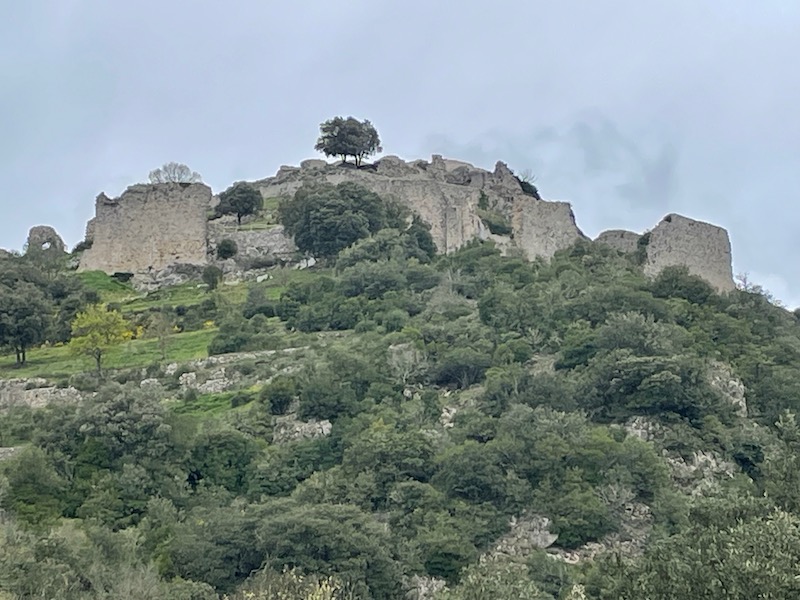
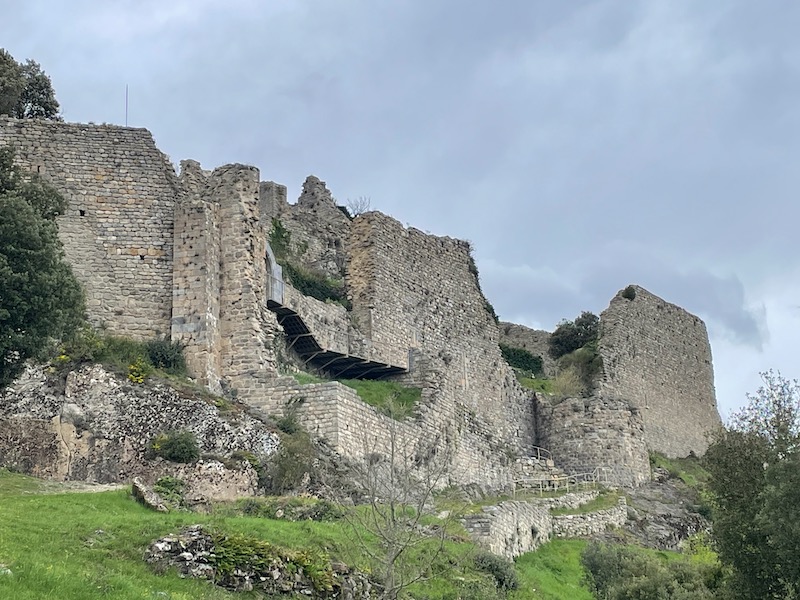

I took this drawing from the website of the chateau, which shows what the chateau would have looked like at the start of the 14th century. You can see the path the man is walking up, which goes to the first opening. He would continue up a path and then have to make a sharp left turn, into the barbican and then another sharp right turn into the doorway to the castle. The barbican was an important addition to the outer defensive perimeter, specifically funneling soldiers up a ramp next to the castle walls and then the sharp right turn. As they turned left and up a ramp, there were arrow slits (shown in the 2nd picture) in the wall that allowed the defenders to shoot directly at the invaders. Then the sharp right-hand turn made it almost impossible for right-handed invaders to use the swords that they carried in their right hands, but really easy for the right-handed defenders to swing their swords at them.

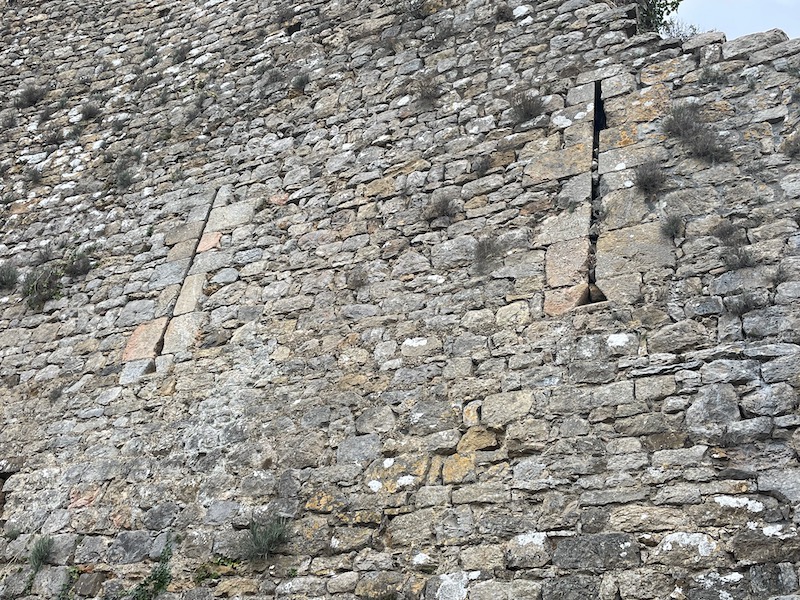
A view of one of the walls, to give an idea of how thick these were. They were strong defensive walls until the advent of the cannon, at which time they became ineffective.

Here you can see the outline of one of the round towers. Once the fortress was no longer useful, they destroyed parts of it to ensure that nobody would be able to use the fortress again. This tower was one of the things destroyed.

Here is the chapel for the castle, which you can tell by the cross-shaped window.
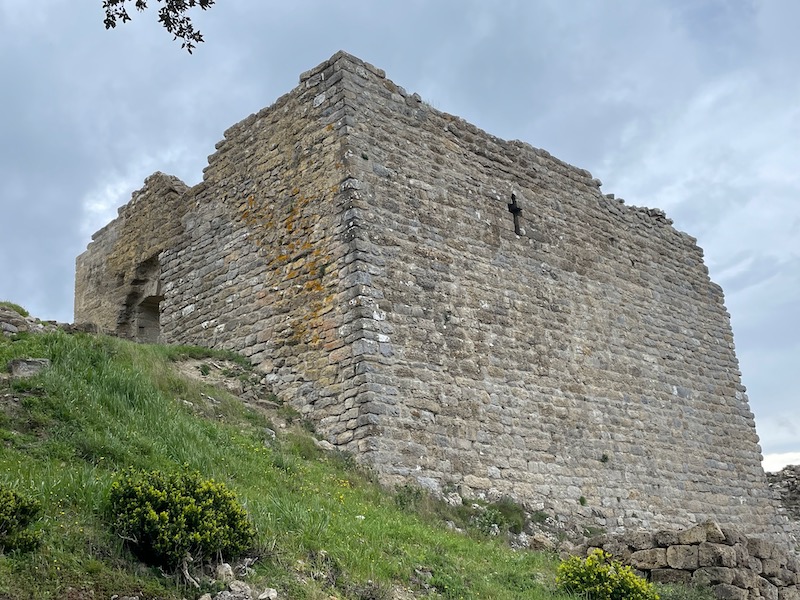

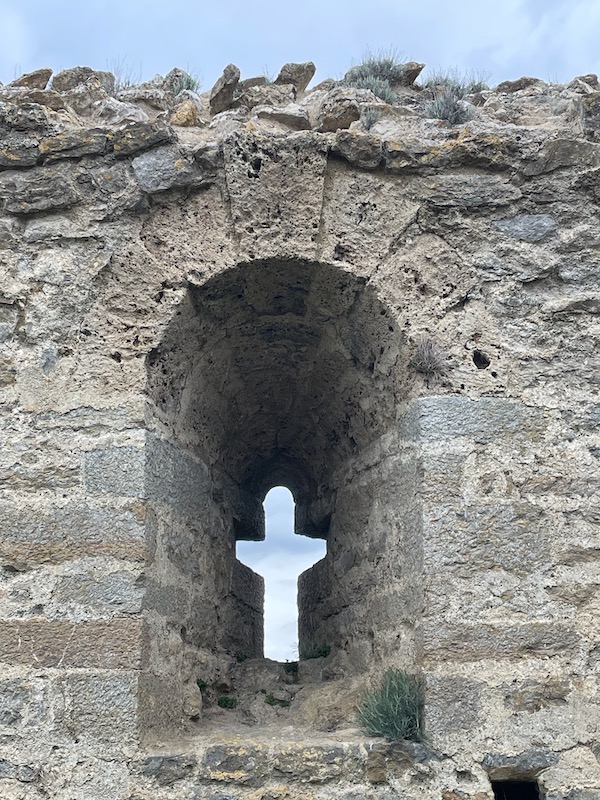
And part of the buildings that were part of the lords castle.
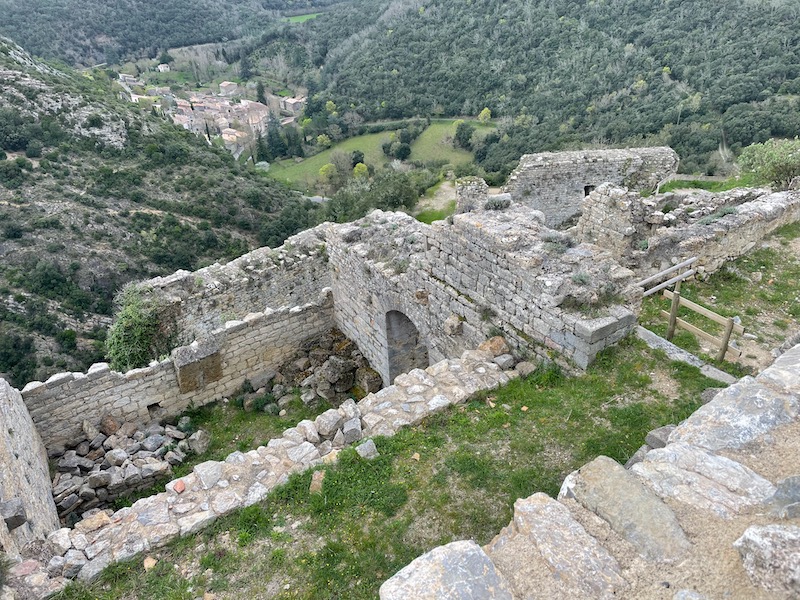
I must admit, the information they provided was really great ... better than I expected with the chateau in ruins!
Back to the village of Termes, we visited the Church Notre-Dame-de-la-Nativité. The church most likely dates from 1260, when the population inside of the fortress was relocated into the valley. There haven't been substantial modifications, so it is mostly the same as in the 13th century. It is a simple rectangle with a single nave. The walls are a meter thick and most of the architectural elements are Romanesque. The interior is relatively dark due to only having 4 small windows on the sides.

Thankfully, it was lit inside :-) You can see the rectangular nave with the barrel-shaped roof made all of stone.
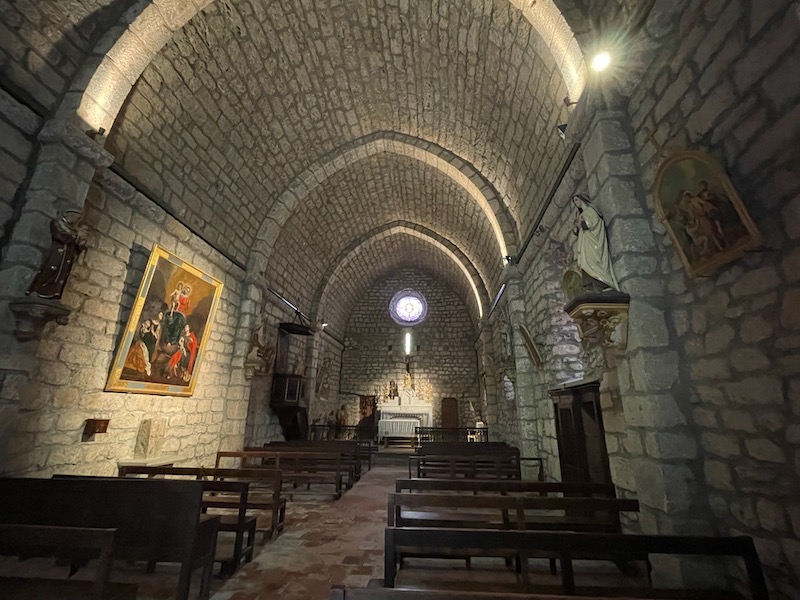
The stained-glass windows are more modern, dating from the 19th century. The painting dates from the 17th century depicting the Virgin and child seated between Saint Cecilia and Saint Catherine.


The main altar and one of the statues along the wall.

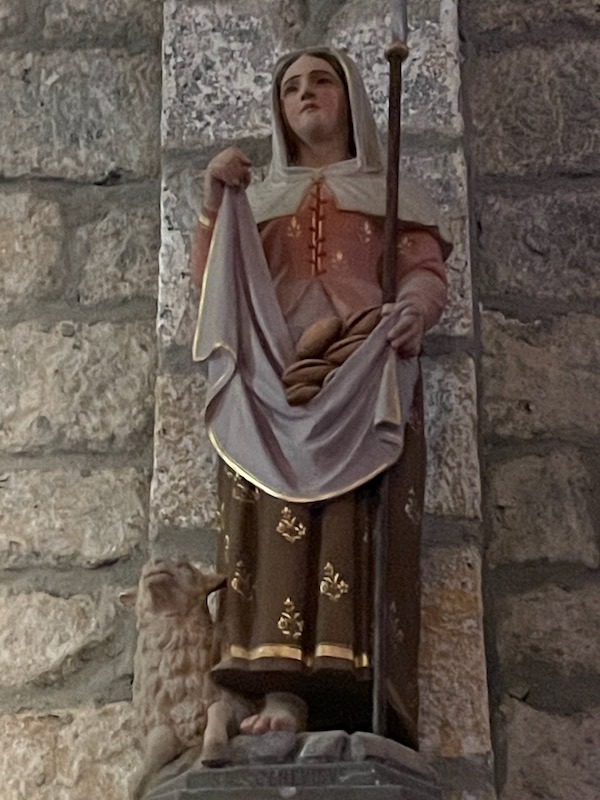
And interestingly enough, a statue of Saint Antoine de Padua ... we will be visiting the Italian town of Padua on this trip!
